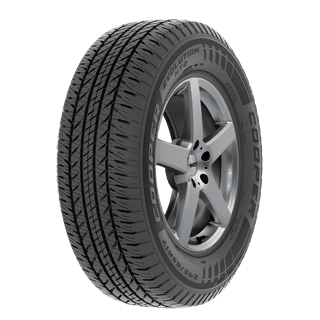Tire Service: The Impact of Climate Condition
When it comes to ensuring ideal efficiency and safety when driving, comprehending the influence of weather on tire service is essential. From scorching warmth to icy roads, each weather condition component can significantly affect tire functionality and general driving experience. By diving right into the results of varying weather on tires, drivers can acquire useful insights that may improve their lorry's performance and longevity. In this discussion, we will certainly discover the intricate relationship between climate condition and tire service, clarifying the importance of weather-specific tire maintenance methods and factors to consider.
Warmth and Tire Efficiency
When subjected to high temperatures, tires experience changes in efficiency that can substantially impact vehicle safety and handling. The warmth produced from prolonged driving or warm weather conditions causes the tire rubber to soften, leading to reduced walk life and increased wear.
Additionally, heats can increase the process of tire aging, causing the rubber to wear away much more promptly. This can lead to splits, protrudes, and other kinds of damage that jeopardize the structural honesty of the tire. To alleviate the results of warm on tire efficiency, chauffeurs need to routinely inspect their tire stress, rotate tires to make certain even put on, and examine for any kind of signs of damage. In addition, using tires especially designed to stand up to high temperature levels can help keep optimal performance and safety and security when traveling.
Winter Effects
Winter conditions can have a considerable influence on tire efficiency and safety. As temperatures decrease, tire rubber can solidify, resulting in reduced traction on icy or snow-covered roadways. In cool climate, tires might likewise lose atmospheric pressure much more quickly, which can affect dealing with and fuel effectiveness. Additionally, chilly temperatures can trigger tire sidewalls to stiffen, raising the threat of damages from pits or other road hazards.
To mitigate the results of chilly weather condition on tires, it is crucial to regularly examine tire pressure and inflate them to the manufacturer's advised degrees. Utilizing winter season or all-season tires designed for winter problems can additionally enhance traction and hold on icy or snowy roadways - tires morris il. Proper tire upkeep, including normal evaluations for wear and damages, comes to be even a lot more crucial throughout chillier months to ensure optimum performance and safety and security
Rainy Conditions Impact
Throughout wet problems, tire performance and safety can be considerably influenced by the wet road surfaces and decreased exposure. The tread pattern of tires plays an essential role in preserving traction on wet roads. Tires with damaged treads are a lot more vulnerable to hydroplaning, where a layer of water accumulates in between the road and the tire surface, causing loss of grip. To battle this, motorists must frequently check their tires for ample walk depth and consider spending in tires particularly created for damp conditions.

Snow and Tire Safety
Snow-covered roadways present distinct difficulties for chauffeurs, emphasizing the relevance of proper tire selection and upkeep. When driving in snowy conditions, having the ideal tires can make a considerable distinction in safety and performance. Wintertime tires are created with unique rubber compounds and step patterns to supply much better grip on snow and ice contrasted to all-season tires. The much deeper footsteps and sipes of winter season tires help grip the road much better, decreasing the risk of moving and slipping.
Along with making use of wintertime tires, it is crucial to ensure they are effectively inflated. Cold weather can create tire pressure to go down, impacting traction and handling (tire shop morris). On a regular basis inspecting and keeping the correct tire stress is crucial for optimum performance in snowy conditions

Weather-Related Tire Maintenance
Weather-related tire maintenance includes a variety of practices aimed at review making sure optimum tire function and longevity in various climate situations. One vital element of weather-related tire maintenance is tire pressure regulation. Evaluating tire tread regularly and replacing tires when walk wear gets to a particular depth is crucial for maintaining grip and stability in damaging weather.
Conclusion
In verdict, climate problems have a significant influence on tire efficiency and safety (discount tires morris il). From heat impacting tire stress and wear to cool weather condition lowering traction, it is necessary to consider the weather when preserving and making use of tires.
In this conversation, we will certainly check out the detailed partnership between weather conditions and tire solution, losing light on the importance of weather-specific tire maintenance practices and considerations.
